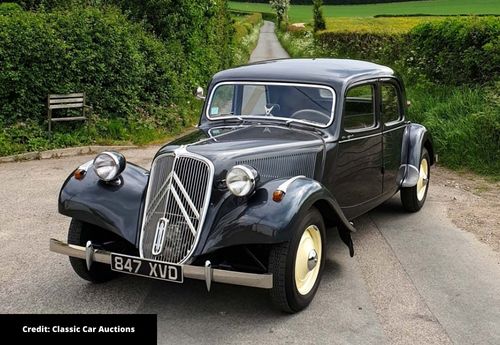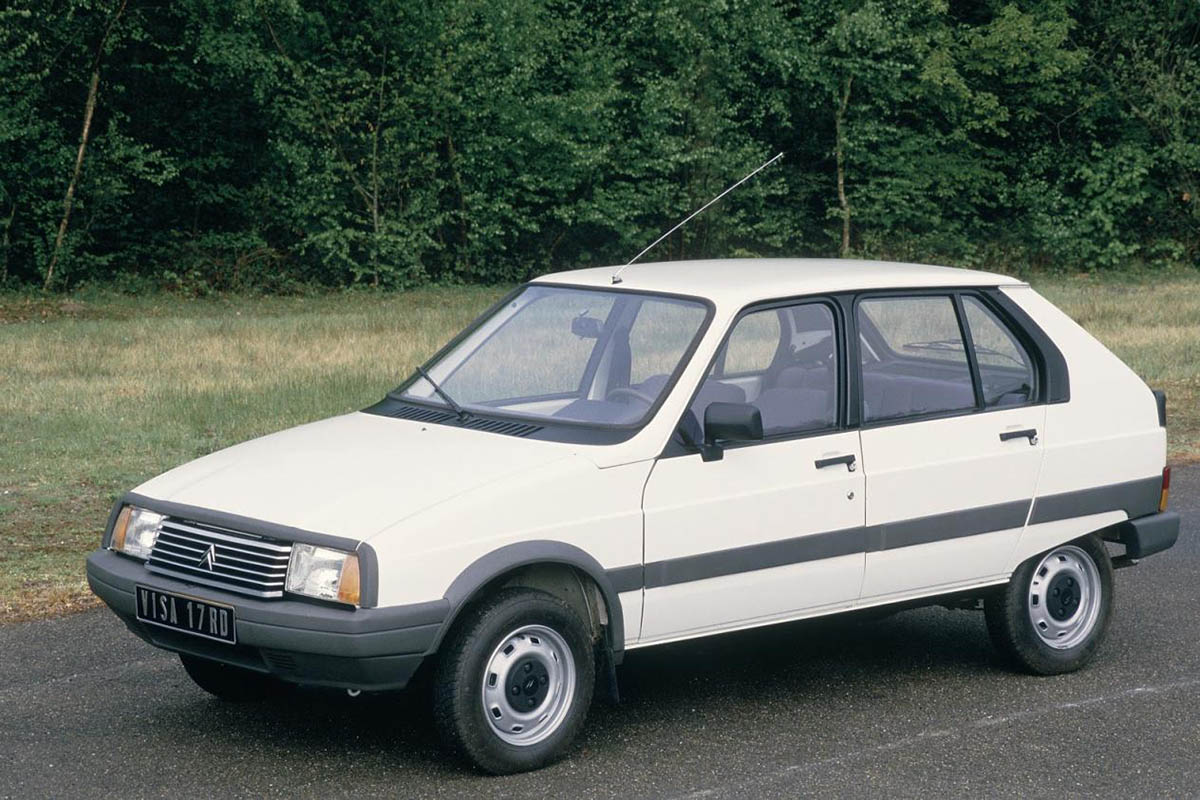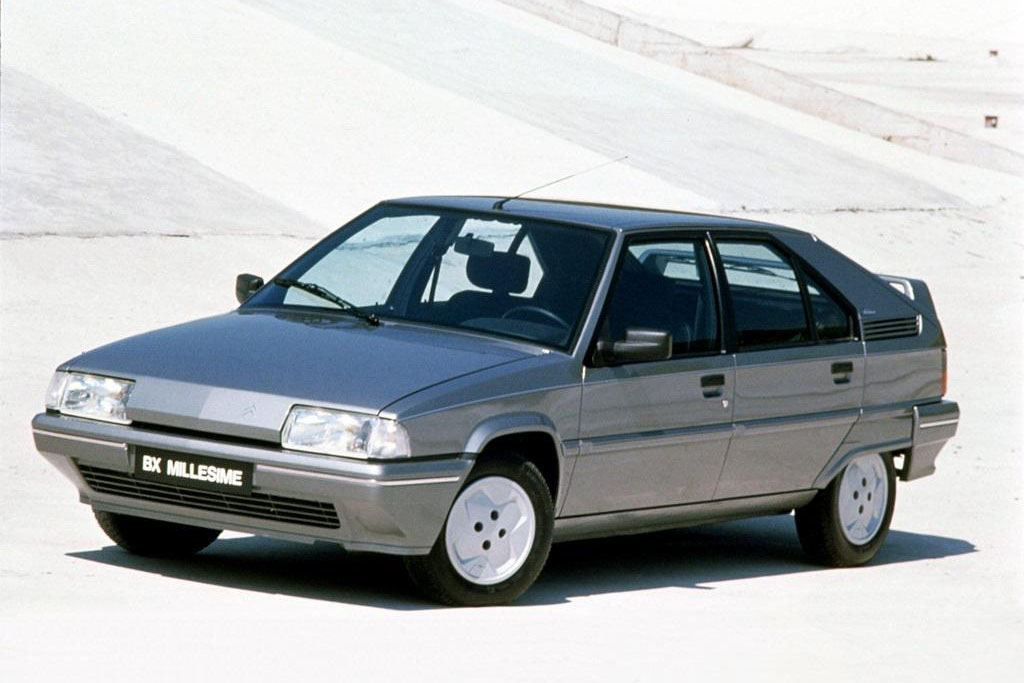Sensible Citroens to own
Citroen is famed for its whizz-bang thinking when it comes to solving some of the automotive world’s conundrums. How to make a family car glide over cobbled French roads? Simple, design a gas suspension set-up that’s linked front to back. Obvious, really… However, there are cars in the Citroen catalogue that are, well, simpler and they make for great classics to own while still retaining all the company’s charm with which it is rightly held in high regard.
Citroen Traction Avant
Some might regard the Traction Avant as where Citroen veered off down the expressway of building cars in a complicated fashion. It’s true the Traction Avant brought front-wheel drive to the mass market and pioneered monocoque construction, but it’s not nearly as complex as naysayers would have you believe. This makes it an ideal introduction to pre-war driving as it was so advanced at its launch in 1934 that it remained in production until 1957.
An easy to work on and maintain four-cylinder engine is used in most Traction Avants, while the torsion bar and wishbone suspension set-up will be familiar to many classic owners who like to tinker. Add in superb parts availability and the Traction Avant is one of the most sensible classic Citroens you could hope to own.

Citroen 2CV
The same is true for the 2CV, which many think is a car powered and suspended by some strange Gallic magic. Yet, look at these elements of the 2CV logically and you quickly understand there’s nothing to be worried about. If anything, the more you learn, the more you realise just how cleverly simple these endearingly oddball cars are.
Looking after a 2CV is a mix of vintage and modern. They need plenty of greasing to keep them running and driving sweetly, yet the engines will take a lot of abuse without complaint. You can also easily buy a 2CV with disc front brakes for decent stopping power, and all come with the added bonus of the roll-back canvas roof to turn them into a convertible in seconds. Perhaps the only thing that might take longer to master is the gear shift pattern, which is turned through 90-degrees so the lever pokes out of the dash rather than up from the floor.

Citroen Visa
If the 2CV still sounds a little too left-field for your first foray into Citroen ownership, how about the Visa? This back-to-basics hatch rival to the Ford Fiesta is available with the same engine as the 2CV, but the air-cooled flat-twin is enlarged to 652cc for the Visa.
As a result, you get the same revvy fun of the engine but with a tad more power. Or, you could opt for the four-cylinder engines borrowed from Peugeot, which includes the 205 GTI’s motor in the Visa GTi. Citroen even made a convertible Visa as a nod to the 2CV while staying within the bounds of sanity.

Citroen AX
The successors to the Visa also work as sensible Citroen options if you don’t fancy the hydropneumatics of a DS, GS, CX or XM. The AX of 1987 was a thoroughly modern interpretation of the 2CV idea. Light weight made the most of the AX’s modest power and helped it to handle in a way many other superminis of the time were incapable of matching. The clean-cut design works equally well in three- or five-door forms, and there’s way more space inside the AX than you would credit it with when first setting eyes on its diminutive exterior form.
The engine line-up for the AX was drawn from the PSA parts barrel of the 1980s, which makes it straightforward to obtain parts for this car. It also means most AX models are surprisingly low-cost to buy and run as their desirability has yet to match that of the Peugeot 205 or Ford Fiesta. The exception is the feisty AX GT with its 85bhp 1.4-litre motor. Find one of these in good order and you’ll have yourself a prime slice of 1980s hot hatch hoonery.

Citroen Saxo
Following on from the AX is another small Citroen that gained a reputation for punching well above its featherweight in the handling stakes – the Saxo. Beloved of new drivers and modifiers at the peak of the Max Power craze in the 1990s and early 2000s, the Saxo is now a great way to enjoy a daily slice of classic driving. It’s very much an analogue car in the modern digital world, yet it keeps pace with traffic and has enough modern features to warranty regular use.
As with the AX, the Saxo that most will covet are the performance models that come in mild VTR form and the much handier VTS. Both share the same 1.6-litre petrol engine, but the VTS comes with 120bhp to the VTR’s 90bhp, so the VTS is good for 0-60mph in 7.8 seconds and 127mph. All this and it corners with a keenness that is alien to most modern hot hatches.

Citroen BX
There will be plenty of times, of course, when all you want to do is make effortless progress. This is an area where Citroen has always excelled, and the BX range launched in 1982 was better at this than any of its rivals.
It came with the interlinked suspension of seen on the GS and CX, but the BX was a more conventional car. Superbly comfortable, the BX balances ease of use with all the Citroen idiosyncrasies you want, and there’s also the option of swift GTI, four-wheel drive, and estate versions.

Citroen Xantia
Bringing us up to as close to the modern day as classic fans might like, the Citroen Xantia has carved out a niche as a brilliant modern classic. Its deft styling is matched by its smooth ride and able handling. If you really want to experience otherworldly cornering ability, find one of the Activa models with their active suspension that resists roll in bends. It’s something that takes you by surprise at first, but you soon take it for granted a family saloon or estate is capable of such physics-defying feats.
Like most of these simpler, more sensible Citroen options, the Xantia can be bought in good condition for much less than a scruffy DS. When you can have a superb French classic without breaking the bank, that really is common sense.


COMMENT